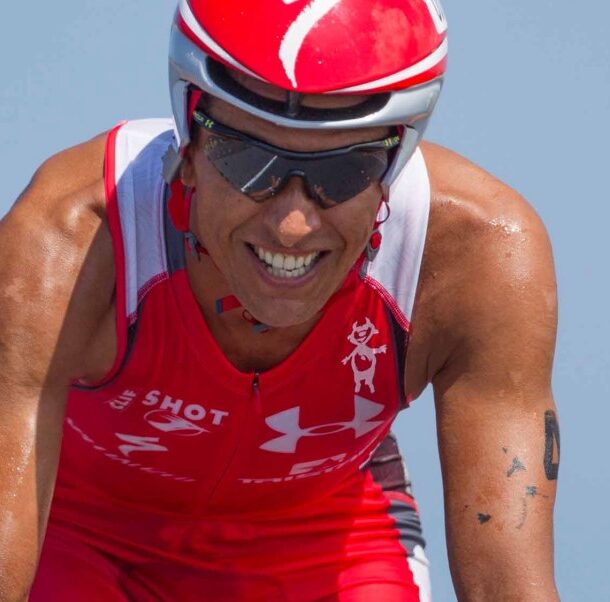
Injuries happen. But you can take a negative and spin it into a positive. Here’s how.
(Originally published in Triathlete Magazine June 2013.)
Right now, I sit typing with 11 screws in my right hand after a freak accident at the Abu Dhabi Triathlon. Abu Dhabi was my first focus event for the season, and I had just put together eight weeks of solid work in preparation for a great race. It was the beginning of my 2013 racing season and the springboard for a flurry of races, culminating in Ironman Cairns. That was the plan anyway, until I collided with a canoe during the swim, only 15 minutes into the event.
Upon arriving home I discovered that the severe pain was actually three severe fractures in my fingers, and six weeks of rehabilitation, to get back full functionality in my hand. Not a perfect start to the 2013 season. All that hard work, all those plans, all that time—gone. So the question is, what can I do about it?
Dealing with a race that did not go as expected can be tough. Your first emotion is disappointment, which often leads to hasty and incorrect decisions. Committing a huge part of your life to a goal has you heavily invested in the objective. Your self-esteem takes a hit. It takes great strength of character to muster the willpower to stand up again. This sounds melodramatic, but it can kill your morale if you do not keep it in check and implement strategies to help you move on.
The best way to deal with this disappointment is to accept it as part of the journey. You cannot dwell on the “what ifs.” My dad would always say to me as a boy when I never got the race result I was after, “Son, you will fall many times in your life, but you will never be a failure until you say that someone pushed you.” It took me years to understand what he meant, but as I got older I realized it was some of the best advice I have ever received. You must accept the outcome as it is. You then need to focus on the reasons it happened and address them. Then you can put them to rest, reset your goals, plan your processes and chase again. It is never a failure unless you accept it as one.
In my current situation—or for those who have gotten injured before a race—the same principle applies. It is common to try to nurse yourself through an injury to get to a race start. But you need to be honest with yourself. If this is the route you intend to take, then you really need to downsize your expectations to deal with the potential of post-race disappointment. People who do this are much more likely to rebuild from this setback next time.
First decide whether the injury will allow you to complete the event. Be conservative and always err on the side of caution. My advice to everyone is to take this decision out of your hands and put it in the hands of someone else you trust. Whether that be your coach, mentor, physical therapist or partner, it is best to leave an emotional decision to someone who is a little more removed from the situation. This can be very difficult to do, but accept this as the best option and then begin to implement strategies around this decision.
Never waste your time wallowing in self-pity. If it is an injury, the best thing you can do is restructure your training around sessions that will not affect it. Many times a restrictive overuse injury can give you the freedom to focus on other areas of weakness. In 1996, a foot injury left me out of running and riding for 10 weeks. I used this time to focus on my swimming. I was swimming twice a day, and accepted that my early-season racing was gone. I came off this 10-week block as a far superior swimmer than I had ever been, and addressed a weakness that ultimately took me to a world title in 1997. Had this injury never presented itself, I would never have given the specific time to focus on my swimming. We articulated a path to follow while I healed that kept me both physically and mentally in the game.
Your thought processes should include a shift in focus to what you can do, and a restructuring of your training to fit these new boundaries. Then, adapt your goals and commit to races further out.
This can be a difficult thing for many age-group athletes, especially with the difficulty of getting into races. But there will always be another race, and if you get this process right, more often than not you will deliver far beyond what you expect.
A broken hand was not what I expected at this time of the year. My entire training plan required a complete revamp. I have had to drop two races that were highly important but have had to accept this as part of being an endurance racer. I will be moving into an early-season Ironman on much less fitness than we had originally planned, but this is no longer a concern. My new focus is on what we can achieve in this new build, and how we can maximize my performance using a different approach. I am now giving myself a little extra time in the gym that may yield bigger benefits toward the season end.
If you find a path with no obstacles, it probably leads nowhere. Albert Einstein once said, “In the middle of every difficulty lies opportunity.” Adopt this mind-set, and you won’t ever be derailed in the big-picture perspective.
Philosophy
“Great things happen to people who make great things happen.”
Navigate
chris@macca.com
Terms & Conditions
Privacy Policy

